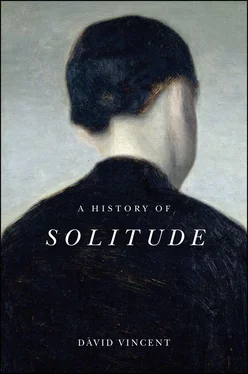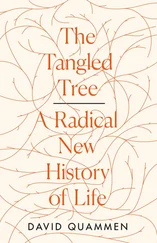65 65. Denis Diderot, Memoirs of a Nun (La Religieuse), trans. Francis Birrell (1796; London: George Routledge, 1928), 60.
66 66. Matthew Lewis, The Monk (1796; Oxford: Oxford University Press, 1998), 53–4.
67 67. Lewis, The Monk, 440.
68 68. Lewis, Life and Correspondence, 151–2. See, for instance, the contemporary review by Coleridge: [Samuel Taylor Coleridge], ‘Lewis’s Romance of the Monk’, The Critical Review, XIX (February 1797): 195, 197.
69 69. Parreaux, Publication of The Monk, 63–70. On the widespread and immediate popularity of cheap versions of the novel, see Carolyn Steedman, An Everyday Life of the English Working Class: Work, Self and Sociability in the Early Nineteenth Century (Cambridge: Cambridge University Press, 2013), 31.
70 70. Samuel-Auguste Tissot, Onanism, trans. A. Hume (1760; London: T. Pridden, 1766), 22. On the subsequent debate, see Thomas W. Laqueur, Solitary Sex: A Cultural History of Masturbation (New York: Zone Books, 2003).
71 71. Tissot, Onanism, 129.
72 72. Zimmermann’s emphasis on this issue is discussed in Margaret Mary Wood, Paths of Loneliness: The Individual Isolated in Modern Society (New York: Columbia University Press, 1960), 6–7.
73 73. Zimmerman, Solitude, 62–3.
74 74. Zimmerman, Solitude, 312.
75 75. Zimmerman, Solitude, 169.
76 76. Zimmerman, Solitude, 162.
77 77. Zimmerman, Solitude, 21.
78 78. Zimmerman, Solitude, 169–70.
79 79. Zimmerman, Solitude, 12.
80 80. Zimmerman, Solitude, 193. On his unhappy residence in Brugg, see Tissot, Life of Zimmerman, 28. Brugg (often anglicized to Brug) had a population of around a thousand at this time.
81 81. MacPherson, The Spirit of Solitude, 56.
82 82. Zimmerman, Solitude, 90.
83 83. Klein, ‘Sociability, Solitude, and Enthusiasm’, 164–7.
84 84. John Thelwall, The Peripatetic; Or, Sketches of the Heart, of Nature and Society (London: for the author, 1793), 8.
85 85. Michael Harris, Solitude: In Pursuit of a Singular Life in a Crowded World (London: Random House, 2017), 7.
86 86. James Vernon, Distant Strangers: How Britain Became Modern (Berkeley: University of California Press, 2014), 19.
87 87. John Milton, The Doctrine and Discipline of Divorce (1643), republished as John Milton, Divorce: In Two Books (London: Sherwood, Neely and Jones, 1820), 17.
88 88. Oxford English Dictionary. See also the discussion in Kevin Lewis, Lonesome: The Spiritual Meanings of American Solitude (London: I. B. Tauris, 2009), 4.
89 89. Lord Byron, Childe Harold’s Pilgrimage, Canto III, verse LXII, lines 590–4.
90 90. Byron, Childe Harold’s Pilgrimage, Canto III, verse LXVIII, lines 648–51.
91 91. On the increasing incidence of the term, which was almost unknown in the eighteenth century, see Fay Bound Alberti, ‘This “Modern Epidemic”: Loneliness as an Emotion Cluster and a Neglected Subject in the History of Emotions’, Emotion Review, 10, 3 (July 2018): 3–5.
92 92. A Christmas Episode from Master Humphrey’s Clock (11 April 1840), in Charles Dickens, A Christmas Carol and Other Christmas Writings, intro. and notes by Michael Slater (London: Penguin Classics, 2010), 20, 22. For a similar discussion of ‘solitude’ as a friendless state in the metropolis, see William Hazlitt, ‘London Solitude’, in New Writings of William Hazlitt, ed. Duncan Wu, 2 vols (Oxford: Oxford University Press, 2007), vol. 2, 354–5.
93 93. G. K. Chesterton, ‘On Loneliness’, in Come to Think of It … : A Book of Essays (London: Methuen, 1930): 82.
94 94. Frieda Fromm-Reichmann, ‘On Loneliness’, in Psychoanalysis and Psychotherapy: Selected Papers of Frieda Fromm-Reichmann, ed. Dexter M. Bullard (Chicago: University of Chicago Press, 1959), 326.
95 95. Anthony Storr, Solitude (1989; London: HarperCollins, 1997), ix.
96 96. Ira J. Cohen, Solitary Action: Acting on Our Own in Everyday Life (New York: Oxford University Press, 2016), 2.
97 97. James Daybell, The Material Letter in Early Modern England: Manuscript Letters and the Culture and Practices of Letter-Writing, 1512–1625 (London: Palgrave Macmillan, 2012), 20; Gemma Allen, The Cooke Sisters: Education, Piety and Politics in Early Modern England (Manchester: Manchester University Press, 2013), 8–9.
98 98. Susan Whyman, The Pen and the People: English Letter-Writers 1660–1800 (Oxford: Oxford University Press, 2009), 9–10. Also David Vincent, Privacy: A Short History (Cambridge: Polity, 2016), 47.
99 99. Tissot, Life of Zimmerman, 100.
100 100. David Vincent, Literacy and Popular Culture: England 1750–1914 (Cambridge: Cambridge University Press, 1993), 32–49.
101 101. See, for instance, Diana Senechal, Republic of Noise: The Loss of Solitude in Schools and Culture (Lanham, MD: Rowman & Littlefield, 2014), 34.
102 102. [Daniel Defoe], Serious Reflections during the Life and Surprising Adventures of Robinson Crusoe: with his Vision of the Angelick World. Written by Himself, ed. G. A. Starr (1720; London: Pickering & Chatto, 2008). The novel was not a literary success, and was not reprinted in full until 1895.
103 103. [Defoe], Serious Reflections, 61.
104 104. [Defoe], Serious Reflections, 59.
105 105. [Defoe], Serious Reflections, 66.
106 106. On the association of melancholy with the intellectual endeavours of highly educated men, see George Cheyne, The English Malady: Or, a Treatise of Nervous Diseases of All Kinds (London: G. Strahan, 1733), 181–2; Roy Porter, Madness: A Brief History (Oxford: Oxford University Press, 2002), 83–6.
107 107. Thomas Arnold, Observations on the Nature, Kinds, Causes and Prevention of Insanity, 2 vols (2nd edn, London: Richard Phillips, 1806), vol. 2, 64. Also Crichton, An Inquiry into the Nature and Origin of Mental Derangement, vol. 2, 235.
108 108. Buchan, Domestic Medicine, 119. Also Elizabeth Dolan, Seeing Suffering in Women’s Literature of the Romantic Era (Aldershot: Ashgate, 2008), 25–7.
109 109. Trotter, A View of the Nervous Temperament, 48.
110 110. Lady Chudleigh, Essays Upon Several Subjects in Prose and Verse (London: R. Bonwicke et al., 1710), 233, 234.
111 111. Chudleigh, Essays Upon Several Subjects, 235, 237.
112 112. Zimmerman, Solitude, 144–5.
113 113. Abraham Cowley, ‘Of Solitude’, in Abraham Cowley, Poetry & Prose (Oxford: The Clarendon Press, 1949), 80.
114 114. Cowley, ‘Of Solitude’, 80.
115 115. Robert Bloomfield, The Farmer’s Boy: A Rural Poem (London: Vernor and Hood, 1800), 31.
116 116. Vincent, Privacy, 10–13, 48, 65–6.
117 117. Leo Marx, The Machine in the Garden: Technology and the Pastoral Ideal in America (New York: Oxford University Press, 1964), 4.
118 118. Philip Koch, Solitude: A Philosophical Encounter (Chicago: Open Court, 1994), 101.
119 119. Senechal, Republic of Noise, xv.
120 120. Cohen, Solitary Action, 2.
121 121. For instance, Richard Holt, Sport and the British: A Modern History (Oxford: Oxford University Press 1990); Robert W. Malcolmson, Popular Recreations in English Society 1700–1850 (Cambridge: Cambridge University Press, 1973); Andrew Davies, Leisure, Gender and Poverty (Buckingham: Open University Press, 1992).
122 122. See, for instance, the biographical account of the well-known pedestrian Mr Foster Powell in The Sporting Magazine (October 1792): 7–15. The periodical later carried an extract from Zimmermann’s Solitude, referring to Sabbath practices in Louis XV’s court: (April 1794): 5.
123 123. Nineteenth-century reprints were usually based on the shorter, French translation by J. B. Mercier, which omitted many of the critical comments on solitude.
124 124. ‘D’Egville’ was presumably named after James Harvey D’Egville (c.1770–c.1836), a well-known dancer and choreographer.
Читать дальше












